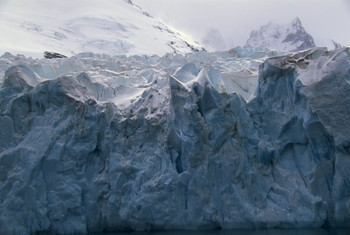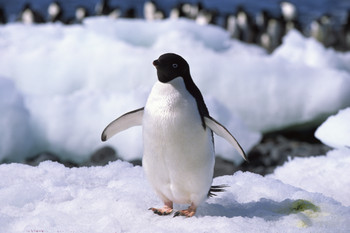
Antarctica: Continent of Endless Ice
Antarctica is perhaps the most unforgiving place on Earth. A full 98 percent of it is covered by ice. That's not just any ice: The average thickness of that super-cold ice is about a mile.
Because it is so cold, Antarctica isn't really a damp place, since water just freezes. In fact, it is the driest of the seven continents. It is technically the largest desert in the world. And the winds can be the fiercest on the planet.
 The temperatures on Antarctica can be downright tropical, reaching highs of 59 degrees Fahrenheit. The coldest readings, however, have been down to -130 degrees Fahrenheit. The temperatures on Antarctica can be downright tropical, reaching highs of 59 degrees Fahrenheit. The coldest readings, however, have been down to -130 degrees Fahrenheit.
The continent has a coastline that stretches 11,160 miles. It is divided nearly identically in two by the Transantarctic Mountains. Another  mountain range, the Ellsworth, contains the highest peak, Vinson Massif, which rises 16,050 feet above sea level. The continent also has an active volcano, Mount Erebus, above ground. Several underground volcanoes have been found in recent years. mountain range, the Ellsworth, contains the highest peak, Vinson Massif, which rises 16,050 feet above sea level. The continent also has an active volcano, Mount Erebus, above ground. Several underground volcanoes have been found in recent years.
Even though the surface is mostly ice, much water can be found underground. More than 70 lakes are trapped within the ice, and some scientists think that tiny life could live within these subglacial waters.
 A large handful of plant and species call Antarctica home. Emperor and other kinds of penguins are perhaps the most well-known of the animal species. Other kinds of birds, like albatrosses, can also stand the icy climate. Several kinds of fur seals live there as well, as do many species of marine life, including squid and whales. Plant life is generally lichens, algae, and fungi. Invertebrate species also number highly. A large handful of plant and species call Antarctica home. Emperor and other kinds of penguins are perhaps the most well-known of the animal species. Other kinds of birds, like albatrosses, can also stand the icy climate. Several kinds of fur seals live there as well, as do many species of marine life, including squid and whales. Plant life is generally lichens, algae, and fungi. Invertebrate species also number highly.
Humans don't live full-time on Antarctica. The conditions are just too unforgiving. People from various countries serve tours of scientific duty there, but their stays last at most a handful of years.
These scientific endeavors do not include mineral mining. That is prohibited by the Antarctic Treaty, which was signed in 1959 by 12 of the world's leading nations. The treaty also prohibits military activities on the frozen continent. The 12 countries whose representatives signed the Antarctic Treaty were Argentina, Australia, Belgium, Chile, France, Japan, New Zealand, Norway, South Africa, the Soviet Union, the United Kingdom and the United States. (Russia has since inherited the Soviet Union's signature.) |
|